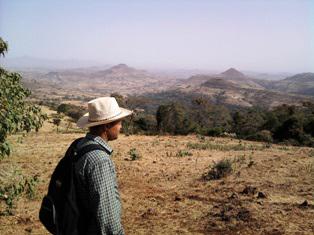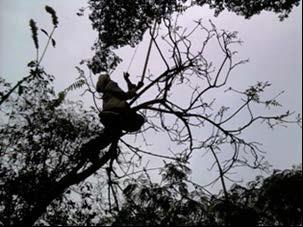Haile Yineger Tariku
Other projects
18 Oct 2013
Habitat Fragmentation in NW Ethiopia: Effects on Pollen-Mediated Gene Flow of Endangered Medicinal Tree, Prunus africana
This project aims to evaluate the effects of forest fragmentation on population connectivity of an endangered medicinal tree species, Prunus africana (Hook.f.) Kalkman (Rosaceae), in NW Ethiopia.
Habitat loss and fragmentation affect species persistence and population dynamics in remnant forest patches of fragmented landscapes. Their effects may, however, be taxon-specific or significantly vary from region to region. Where populations become isolated, they can quickly lose genetic diversity, particularly where these populations are small. This can increase the chance of local extinction due to pathogens and other environmental factors. Alternatively, if seed and pollen are sufficiently dispersed between isolated patches, then the risks are much reduced. This information is critical to design the most appropriate management options.

Daraba-Sigsi, one of the quickly vanishing large forest patch.
North-western Ethiopia has experienced heavy destruction of forests for several centuries and data are lacking for this region on whether existing fragmentation processes are posing adverse effects on population connectivity of tree species. This project attempts to assess fragmentation effects on seed and pollen dispersal and hence connectivity amongst isolated population of an endangered species of conservation concern in fragmented landscapes of this poorly studied region, specifically Guangua Wereda, Gojjam.

Sample collection.
The candidate study species, Prunus africana (Hook.f.) Kalkman (Rosaceae), is an endangered medicinal tree species whose bark or partially processed bark extract has been heavily exported for its medicinal value from Africa to Europe causing concerns for its conservation and sustainable utilization (Cunningham et al., 2002). In Ethiopia, human disturbances (e.g., logging, fuel wood production, deforestation, expansion of agricultural land as well as inappropriate investment activities) are reasonably expected to act as key drivers of habitat loss and fragmentation. These in turn may detrimentally affect the processes of seed and pollen dispersal and recruitment potential of this species. Thus habitat loss and fragmentation may cause local extermination of this species in unexpectedly short timescales. Understanding habitat loss and fragmentation effects on seed/pollen-mediated gene flow as well as the spatial genetic structure within and among the remnant natural populations of the species would provide critical information for the development of sound conservation and management strategies.
Relevant software will be used for precise characterizations of landscape features to select study landscapes based on contrasting levels of habitat fragmentation and structural connectivity. The project will employ hyper variable microsatellite markers in an innovative approach to quantify fragmentation effects on the complex ecological processes, seed and pollen dispersal. Important stakeholders will be involved to initiate or advocate conservation activities in the region including but not limited to organizing awareness creation workshops for the local community in collaboration with the local administrators and conservation practitioners.